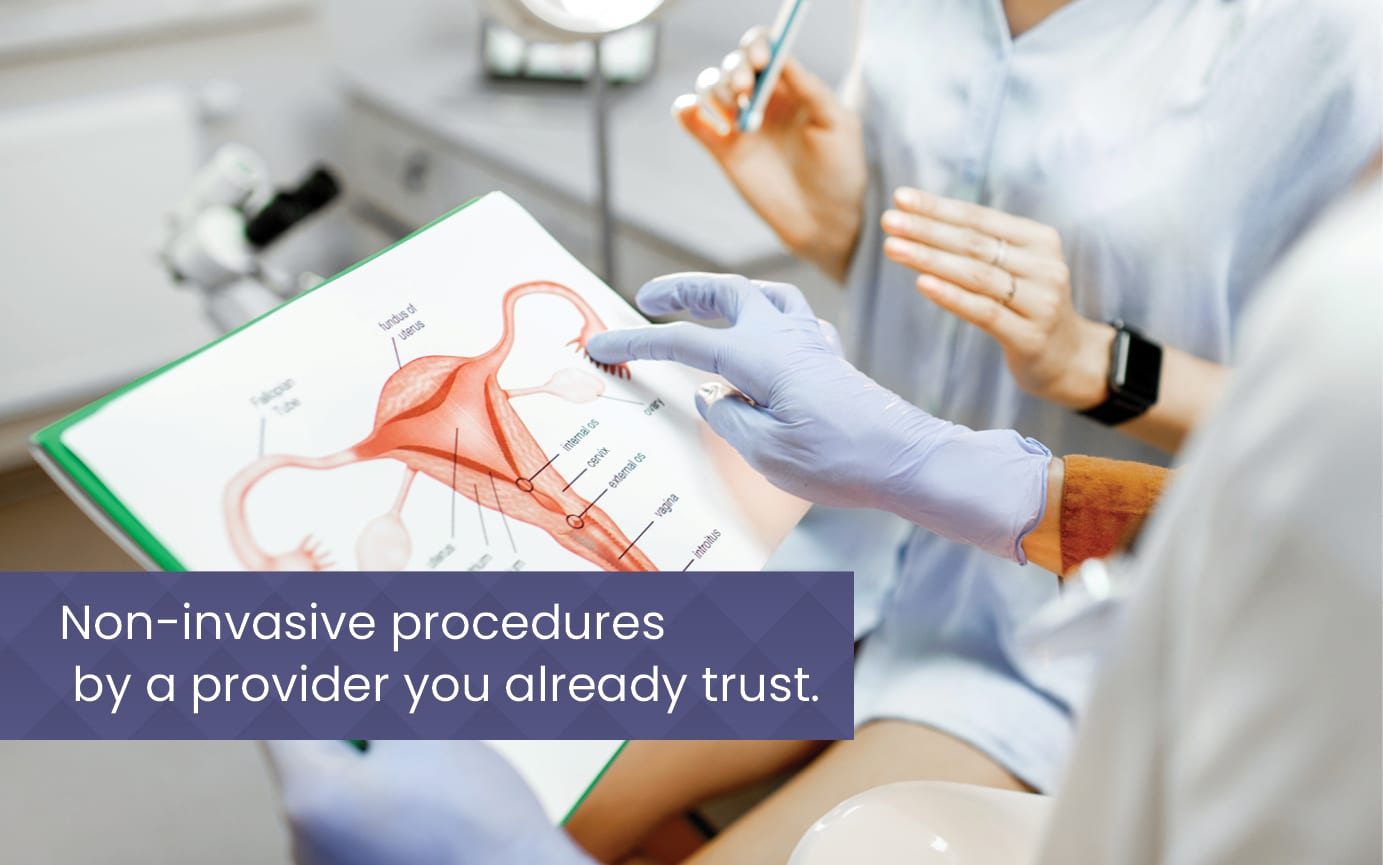
In-Office Procedures
In-office procedures are minimally invasive and often allow patients to resume normal activities the next day. These procedures are performed by your established medical care provider in the comfort and safety of our clinic. Available in-office procedures include tests for abnormal Pap smears, birth control implantation and removal, removal of abnormal tissue and testing for urinary incontinence. Talk to your provider for more information about in-office procedures.
Colposcopy
A colposcopy is a type of cervical cancer test. If a Pap smear comes back as abnormal, your provider will conduct a colposcopy to find abnormal cervical cells by viewing the cervix through a colposcope. A colposcope is an external instrument that does not go inside the patient’s body. If your provider detects abnormal cells during the colposcopy procedure, they will perform a biopsy to learn more.
Loop Electrical Excision Procedure (LEEP)
A Loop Electrical Excision Procedure (or LEEP) is a type of treatment that prevents cervical cancer. This safe, effective procedure uses a small electrical wire loop to remove abnormal cervical tissue following an abnormal Pap test, colposcopy or biopsy.
Urodynamic Testing
Urodynamic testing describes a variety of tests used to determine if the bladder and urethra are effectively storing and releasing urine. There are many urodynamic tests providers use to identify and diagnose problems in the lower urinary tract, including:
- Uroflowmetry, which measures how much urine is in your bladder and how fast the urine comes out.
- Postvoid residual measurement, which measures how much urine is left in your bladder after you urinate.
- Cystometric testing, which measures how much urine your bladder can hold, how much pressure builds up inside your bladder when it stores urine, and how full your bladder is when you feel the urge to urinate.
- Leak point pressure measurement, which indicates to providers the point at which the pressure inside your bladder may cause leakage.
- Pressure flow studies, which measures how much pressure your bladder needs to urinate and how quickly your urine flows at that pressure.
- Electromyography, which uses special sensors to measure the electrical activity of the muscles and nerves in and around your bladder and sphincters to tell physicians whether the messages sent to your bladder and pelvic floor muscles are coordinating correctly.
- Video urodynamic testing, which uses x-rays or ultrasound to take pictures and videos of your bladder while it fills and empties.
Sonohystergram/ Saline Infusion during Sonogram
A sonohysterogram, or saline infusion sonogram, is a diagnostic procedure where saline solution is injected into the uterus during an ultrasound to provide clearer images of the uterine lining and cavity.
Hysteroscopy
Hysteroscopy is a medical procedure that involves the insertion of a small, lighted telescope-like device into the uterus through the cervix, allowing doctors to examine the uterine lining and cavity for diagnostic and therapeutic purposes.
How can I learn more about your in-office procedures?
Denali OB-GYN offers in-office procedures to patients at our Anchorage, AK clinic. Contact us today to schedule an appointment with your provider or a consultation.
